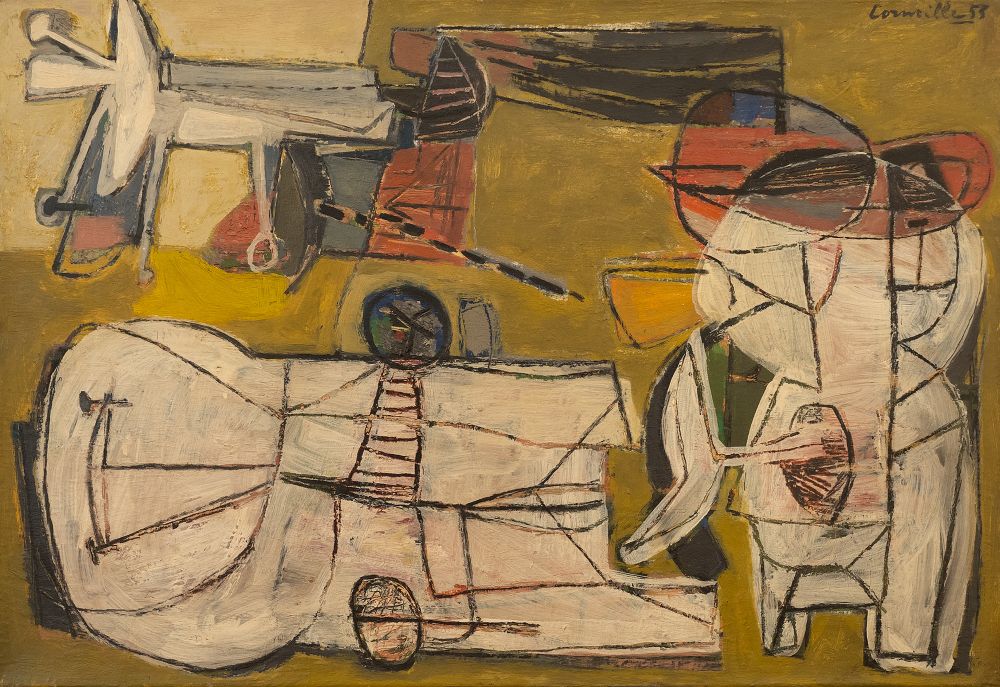Corneille

Selected Works

Corneille
Sans Titre, 1953
Huile sur toile
55 x 80 cm
Signée et datée Corneille 53 en haut à droite
Some of the works depicted are no longer available.
Biography
The impact of Corneille's work is manifold: he is recognized for his vibrant and passionate approach, and his works demonstrate his commitment to the exploration of primitive and instinctive forms in art.
Guillaume Corneille (1922-2010) is a polymorphic artist: painter, engraver and sculptor of Dutch origin. Trained at the School of Fine Arts in Amsterdam, he began exhibiting his works in 1946 and became close to the surrealist movement. In 1948, he founded the experimental movement Reflex with other artists such as Karel Appel, Eugène Brands and Constant Nieuwenhuis, before becoming one of the founding members of the CoBrA group in 1949, with Karel Appel, Asger Jorn, and Pierre Alechinsky. This group, which brought together painters, sculptors and poets, explored an intuitive and free approach to art, seeking to restore a place to instinct and spontaneous expression. In 1949, Corneille undertook a first trip to North Africa, where he discovered Arab and Berber culture, which profoundly influenced his work. He took part in a group exhibition in Paris, then in a CoBrA event at the Stedelijk Museum in Amsterdam. In the following years, Corneille learned etching in Paris in Stanley Hayter's studio.
After the dissolution of the CoBrA group in 1951, he turned to abstraction, particularly through abstract landscapes, before gradually returning to figuration in the 1960s. He found a renewed source of inspiration during his travels, particularly in Africa, South America and Mexico, reintegrating the expressionist vocabulary of his early days.
His recent works, marked by a strong lyrical dimension, represent symbolic elements such as the woman, the bird, the snake and the sun, often associated with themes of fertility and masculine-feminine duality. He began to explore sculpture in the 1990s, particularly with works in polychrome wood, and made his first ceramics in 1954.
The impact of his work is multiple: he is recognized for his vibrant and passionate approach, and his works demonstrate his commitment to the exploration of primitive and instinctive forms in art.
His recent works, marked by a strong lyrical dimension, represent symbolic elements such as the woman, the bird, the snake and the sun, often associated with themes of fertility and masculine-feminine duality. He began to explore sculpture in the 1990s, particularly with works in polychrome wood, and made his first ceramics in 1954.
The impact of his work is multiple: he is recognized for his vibrant and passionate approach, and his works demonstrate his commitment to the exploration of primitive and instinctive forms in art.
